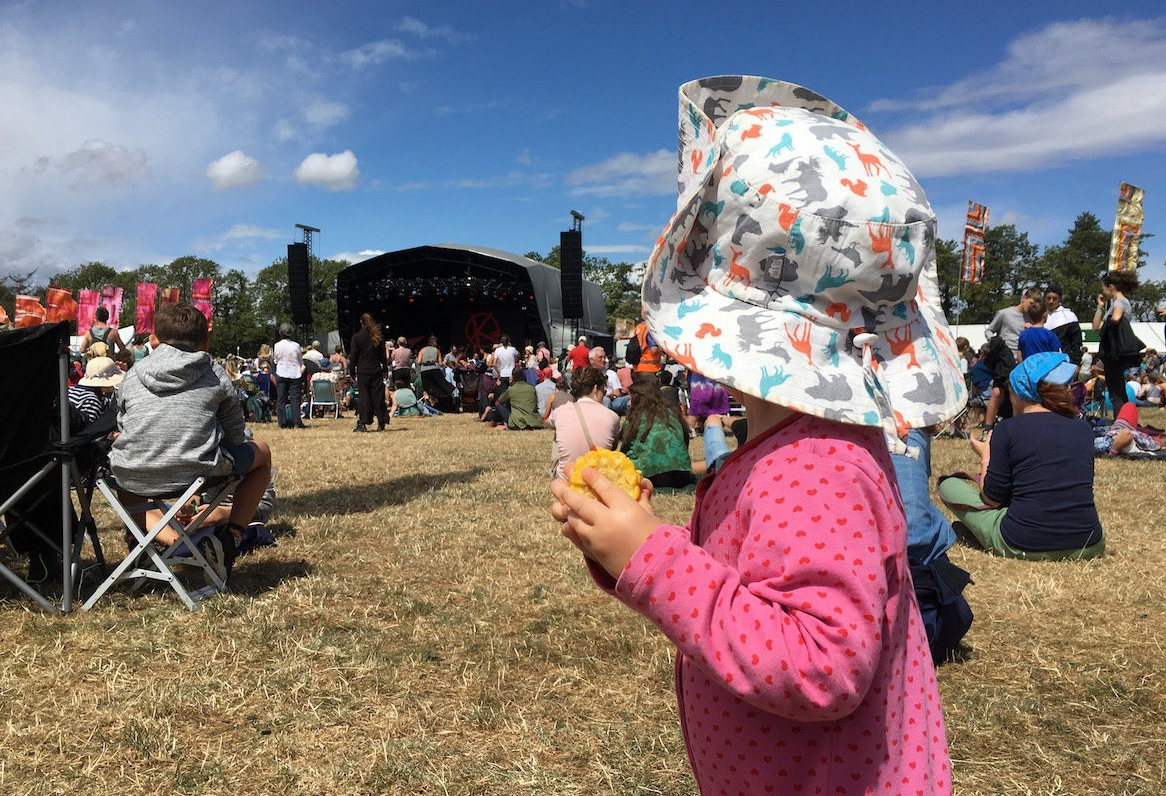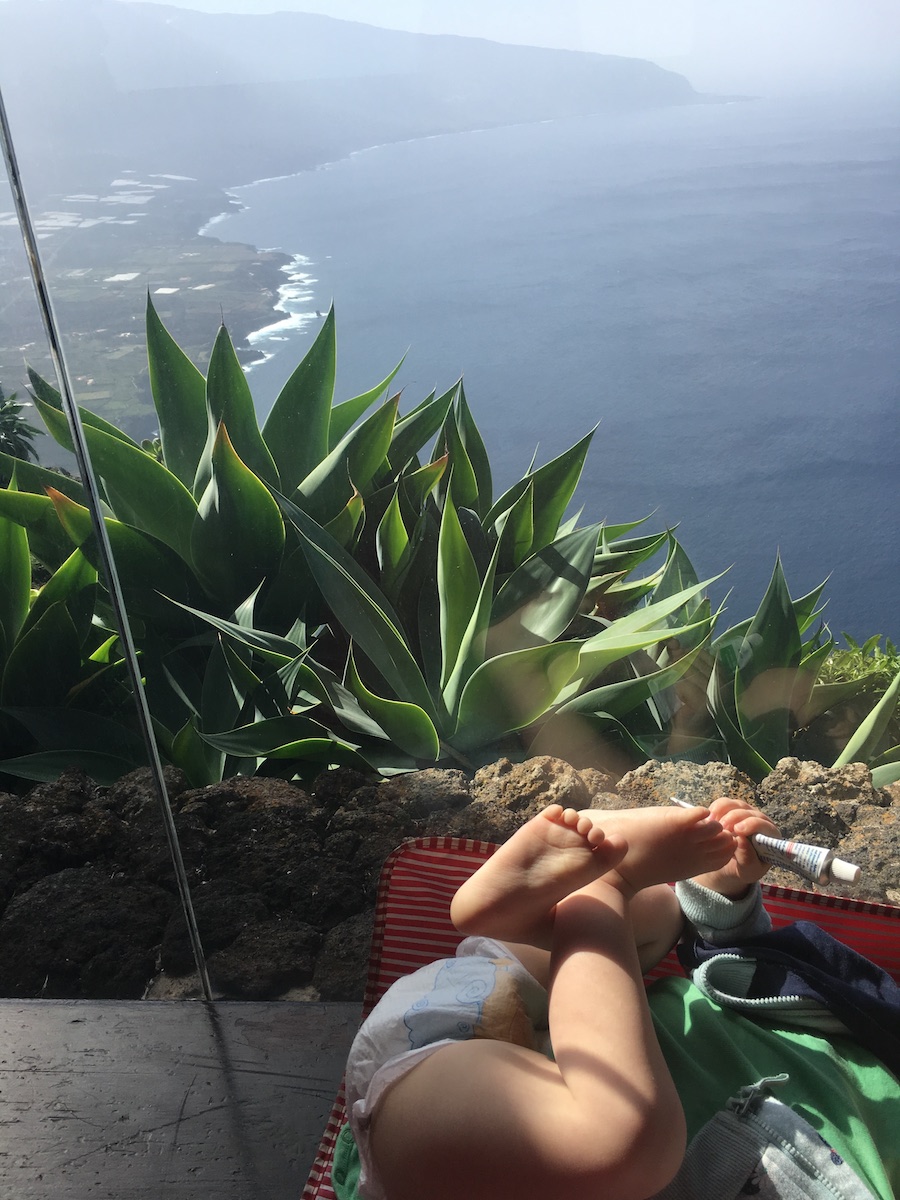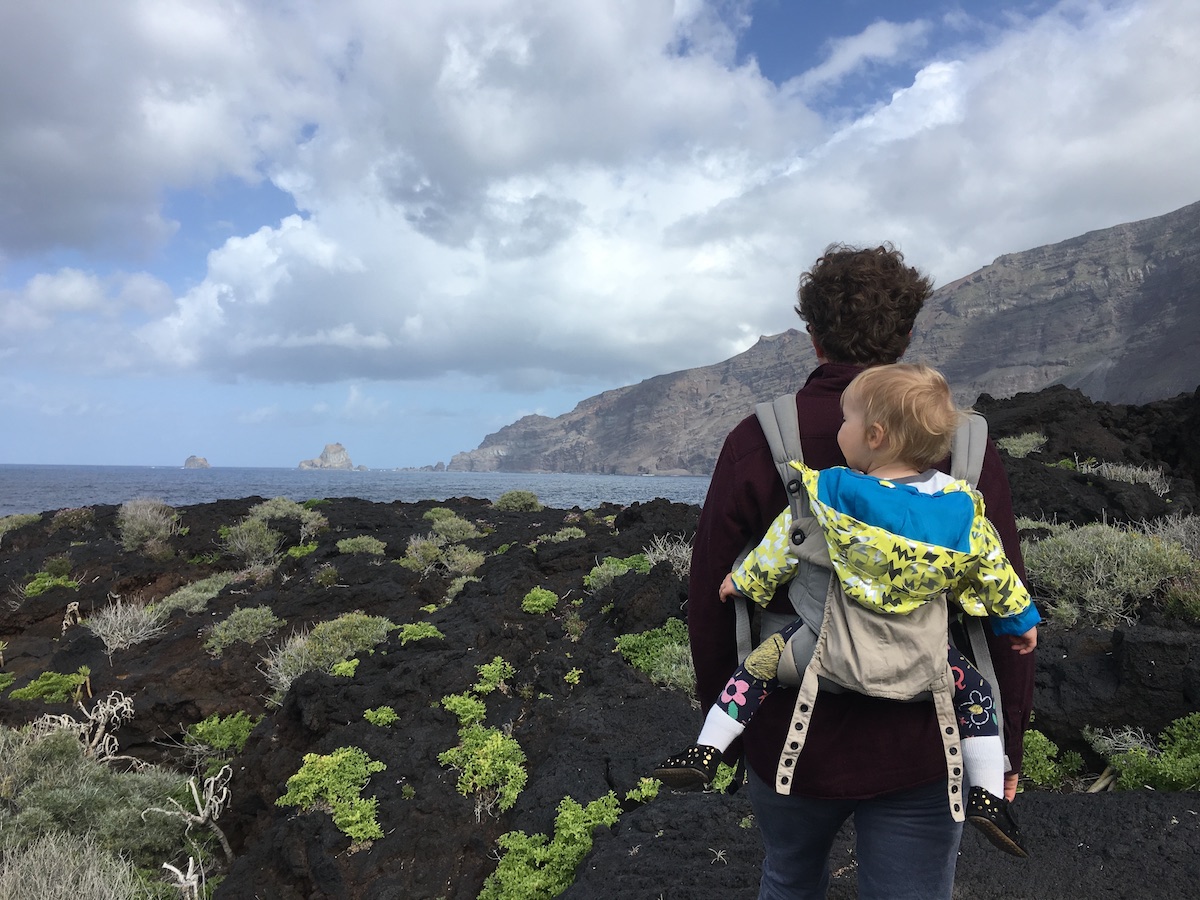Family-friendly music festivals offer a brilliant opportunity to hang out with your little one in a totally different way than you do at home, throwing the routine out the window and taking the days as they come. For parents of babes-in-arms that might mean revisiting your pre-child life, strapping your baby into a sling so you can stay up late and have a dance to your favourite bands. For toddlers, a festival is a (relatively) safe, contained, outdoor environment with thousands of exciting new sights, sounds, tastes and smells to experience. Watching festival gigs with the baby girl and seeing her dance along are some of my all-time favourite moments as a parent.
Of course, being at a music festival with a baby or toddler isn’t always easy. Make no mistake: it’s a very different experience from doing a festival child-free. There will be times where the lack of routine causes problems and times where you wish you’d left your little one at home altogether. But with a bit of pre-planning and a willingness to go with the flow, the good far outweighs the bad and everyone ends up having a lovely time.
Here are my tips for a successful festival with a little one, split into seven sections: how to choose a festival; camping; getting around; sleeping and napping; feeding and snacks; what to pack; and the importance of a getaway plan.
How to choose a festival

If it’s your first time taking your little one to a music festival, opt for a smaller, family-focused one, such as Latitude or Just So Festival. Or if there’s one you’ve been to before and know well, that works too – just make sure you’ve done your research about family camping and other facilities for babies and small children. I’d steer clear of any festival that doesn’t have a family camping area or advice for families on its website, unless you’ve been before or have had a personal recommendation from someone you trust.
Some family-friendly festivals run a shuttle service from the carpark to the family camping area so you’re not having to lug all your gear – and your baby – by yourself, while others provide the facilities for baby bath time. Most offer a wide range of fun activities for even the littlest kids.
If your baby isn’t crawling yet, you don’t need to worry too much about activities however. Various festivals have baby areas, which are handy if you fancy a quiet sit down, and really come into their own in bad weather. More likely though, you’ll want to take advantage of your baby’s portability to make the most of the festival’s offerings for grownup punters.
It makes sense to pick a festival not too far from home for your first go with your little one, unless there’s a particularly good reason to opt for somewhere further afield. Picking up wristbands, parking and setting up camp can be time-consuming and tedious, so cutting down on your travel time will make the whole process that bit easier.
Camping
I’ve confessed my personal bias for campervans elsewhere on the blog, but that doesn’t make what I’m about to write any less true. When it comes to festival camping, more than any other camping trip, a campervan is your friend: quieter, warmer, more secure, easier to keep tidy and better for making a quick getaway if you need to. If I didn’t own one I would seriously consider hiring one for festivals. While an awning is an excellent addition for a standard camping trip, it’s not really necessary for festival camping, as you’ll mostly be hanging out away from where you’re camped. If you need extra storage space, a small pop-up tent works well.
In my post on camping with babies and toddlers I advise buying the largest tent you can afford, and that holds here too. A lot of festival camp sites will feel safe enough to leave your buggy outside at night, but you can’t guarantee that until you get there, so make sure your tent has enough room to bring your buggy inside (and bring a piece of tarpaulin to put it on so you don’t get the rest of the tent grubby).
A tent with a separate interior room means you can sleep separately from your child, and a blackout tent is an ideal solution for little ones (or their parents!) who are sensitive to light. If that’s not an option, a pop-up tent travel cot is an effective way of creating a bit of a cocoon around your sleeping baby – it doesn’t block out all the light but is better than nothing, and will keep her safe from biting insects too.
There’s lots more practical advice about camping with babies and toddlers in my dedicated post on the subject. Lots of it is relevant for camping at festivals – using pillowcases rather than suitcases for clothes, for example, and ideas for baby bedding – but don’t worry about the section on bath time as it’s unlikely you’ll have the facilities to do it properly at a festival. Baby wipes are your friend here.
Getting around

A pushchair – ideally one with big wheels – is essential festival kit, as far as I’m concerned. I did Glastonbury last year with the baby girl (aged 9 months) in just a sling and it was exhausting. The combination of her weight and a backpack full of baby paraphernalia was just too much, a situation made worse by the fact that she would only sleep in the sling if I was standing up. At festivals this summer I’ve been able to put her to bed in the pushchair (see below), wearing ear defenders, and stay out late, whereas at Glastonbury last year I had to put her to bed in the van each night and miss out on the fun.
You could probably do a festival with just a sling with a smaller baby, and someone to help lug the baby stuff, if you really wanted to, but I don’t see why you would. By all means bring a sling, because it will definitely come in handy at some stage, but a pushchair just makes everything a lot easier (and doubles as a means of transporting your camping gear from the car park to the campsite). Just don’t forget the rain cover. And if you’re taking a pushchair with pneumatic tyres (which I highly recommend as they offer a much smoother ride over bumpy ground), remember to bring a bicycle pump and puncture repair kit.
Feeding and snacks

Jars and pouches of readymade baby food come in very handy at festivals, along with non-perishable healthy snacks such as oat bars, rice cakes, baby crisps, nuts and dried fruit. You don’t want to be queuing up and paying over the odds for food every time your little one gets peckish. And while it’s unlikely you’ll be doing much cooking, it makes sense to bring muesli or cereal for breakfast so you’re not having to leave the campsite before you’re ready to start the day proper.
For bottle-fed babies, pre-sterilised bottles, while wasteful, are the easiest and most hygienic way to go, given that you probably won’t have access to hot water for washing up. The other option is to use cold water sterilising tablets, which I’ve written about how to use elsewhere on this blog. Bottles of ready-mixed formula are much more convenient than messing around with powder with a grubby festival happening all around you.
Sleeping and naps
Part of the fun of being at a festival is the freedom from the usual routines, so it makes sense to come with a more relaxed attitude to napping and bed time. That said, foregoing naps altogether is a recipe for disaster for most small children – it’s a matter of finding the right balance for your family.
In any case, a festival is such a stimulating environment that your little one will probably just conk out of her own accord in the pushchair or sling at some point. If you can anticipate that happening, try to put on her ear defenders before she does so that you’re free to explore without worrying about noisy gigs waking her up or damaging her hearing. A pushchair sleep shade is handy for keeping the sun off her while she’s napping during the day and for blocking out bright lights at night time.
When it comes to bed time, we tend to do our usual bedtime routines at the campsite (pyjamas, teeth brushing, sleeping bag, story) then take the baby girl out with us in the pushchair. She doesn’t normally fall asleep until long after her usual 7pm bedtime, and sometimes we even get her out of the pushchair for a run around if she wants to, but eventually tiredness gets the better of her.
What to pack

These days you can buy almost anything at a festival, so it’s not the end of the world if you forget something essential. But in an ideal world, on top of all the usual festival essentials (cash, phone booster battery, etc), you’ll need:
For babies and toddlers
Sunscreen
Sun hat
Ear defenders
Plastic-coated picnic blanket
Extra baby wipes
First aid kit
Infant paracetamol/ibuprofen
Baby sleeping bag
Sling
For toddlers only
Waterproof jacket and trousers
Non-toxic permanent marker for writing your phone number on your toddler in case she wanders off
Getaway plan
In all likelihood it’ll all go smoothly and you’ll have an awesome time but when you’re travelling with a little one it’s reassuring to have a getaway plan in case unforeseen circumstances (torrential rain, for example) make you wish you were elsewhere.
Write a list of important phone numbers and keep it in your wallet so you’ve got them handy in case your phone dies. Have a look to see where the nearest hospital with an A&E department is, and write that down too. On arrival, make sure wherever you’ve left your car will be accessible throughout the festival in case you need to drive off early. Or if you’re going by public transport, do some research as to how you would reach the nearest station or bus stop in a hurry. Finally, in the event that you needed to leave late at night or just couldn’t face camping for some reason, what’s the accommodation situation like nearby?
Have fun!







